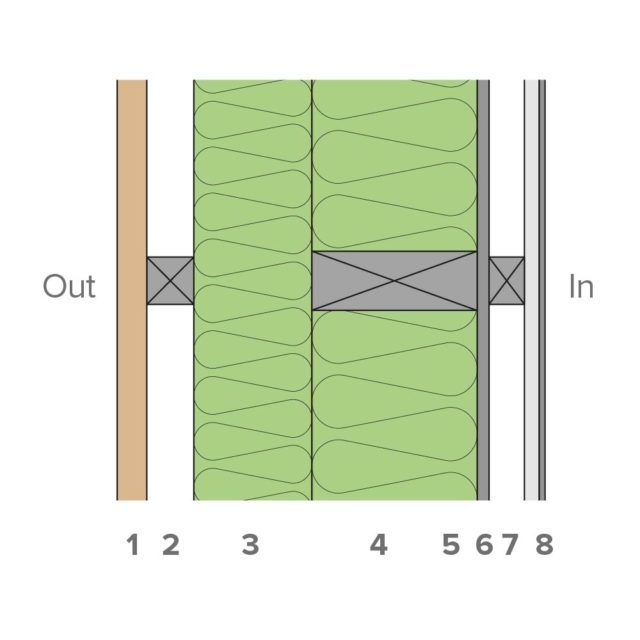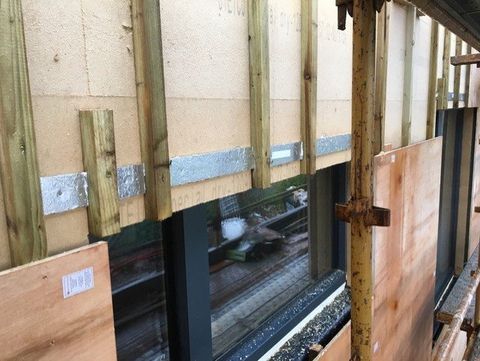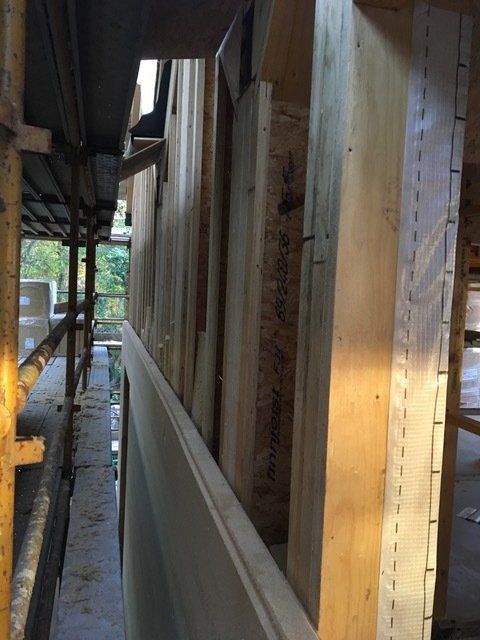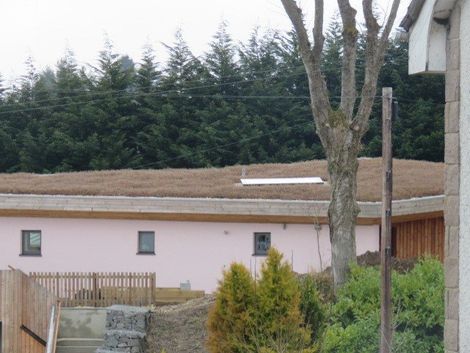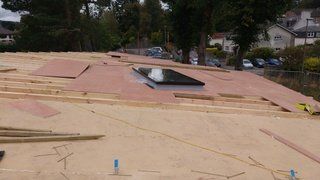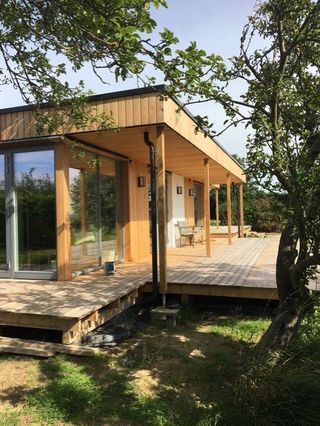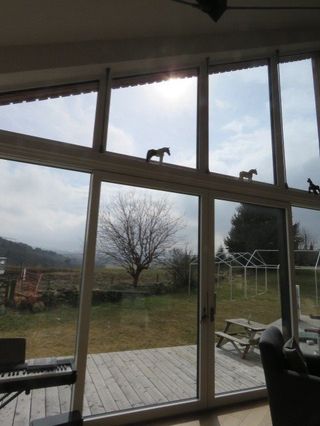1- Timber cladding
2 - 38mm service void
3 - Wood fibre insulation solid board. typically 100mm
4 - timber frame filled with flexible wood fibre insulation . typically 245mm
5 - 9mm OSB timber sheeting
6 - Airtightness membrane
7 - 50mm ventilation gap
8 - plasterboard ( taped or skimmed)


